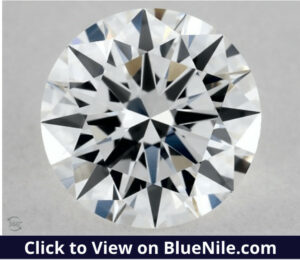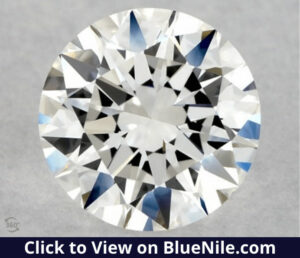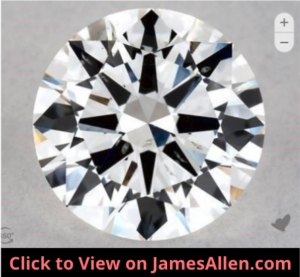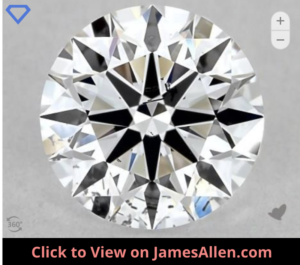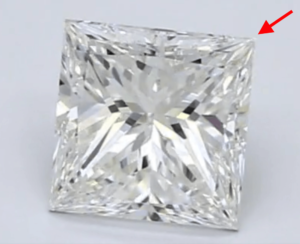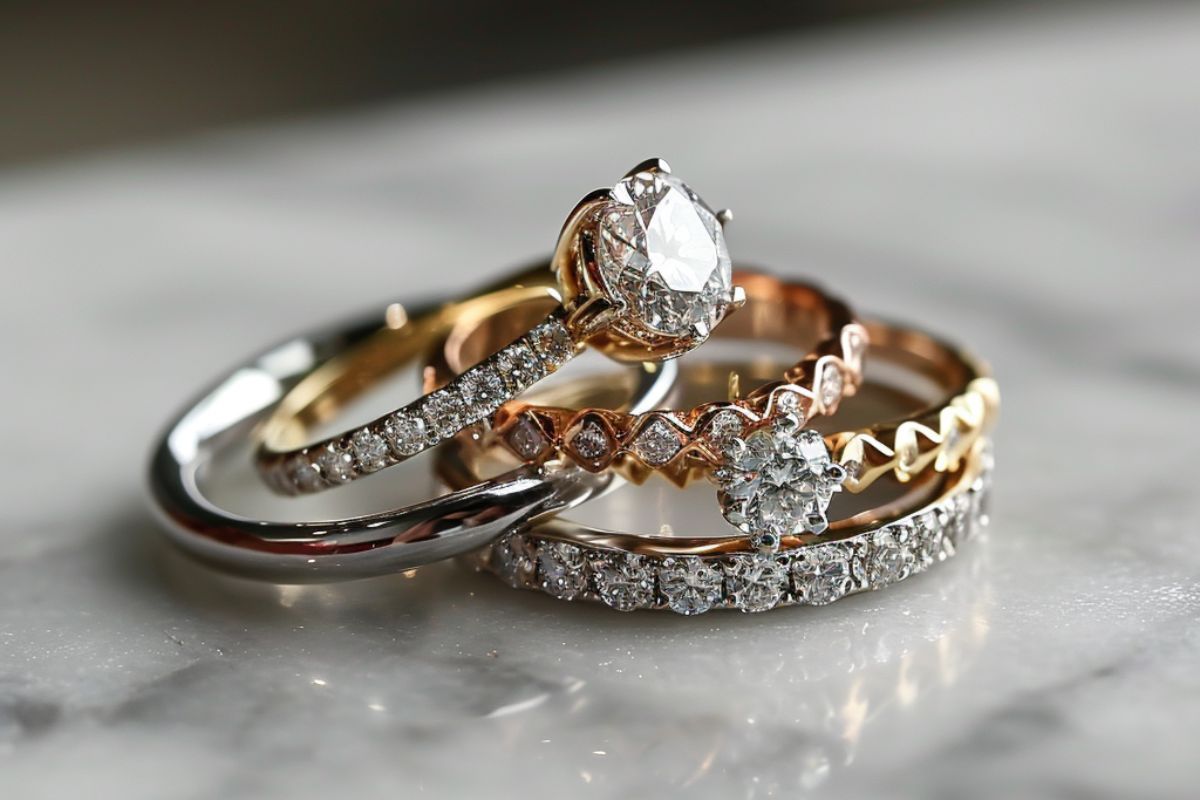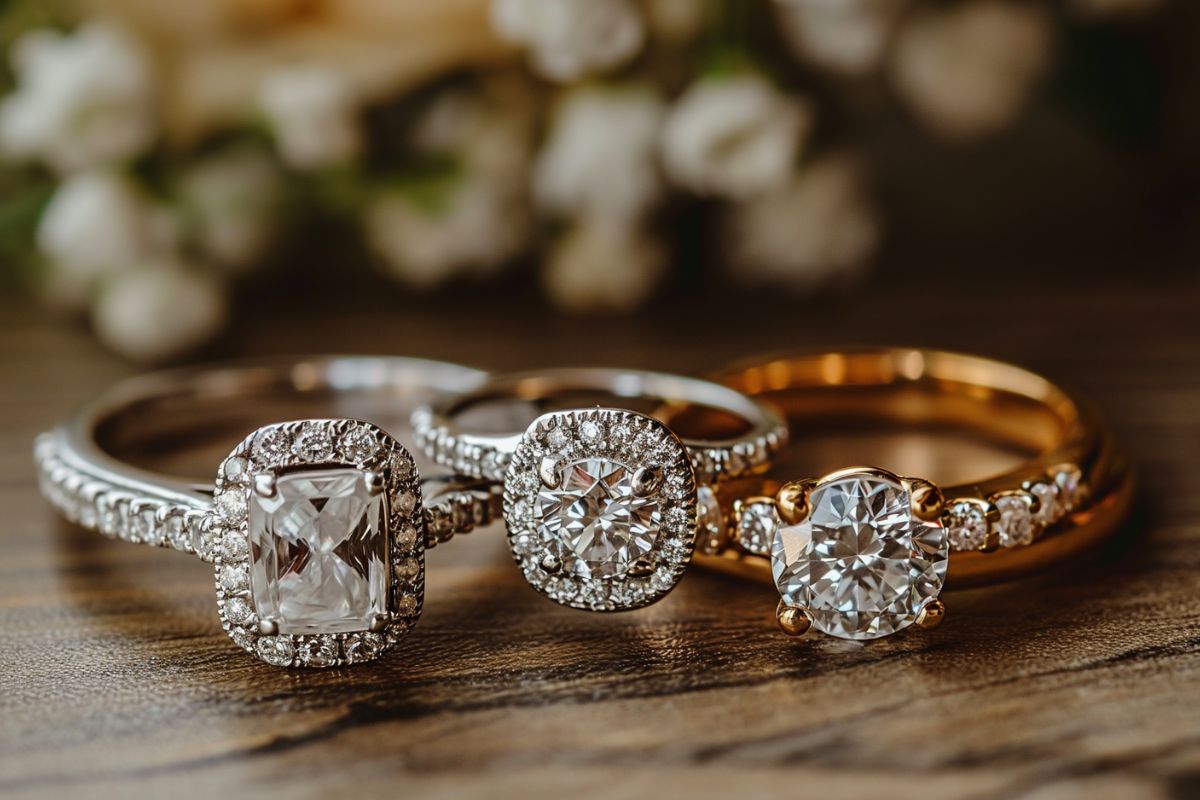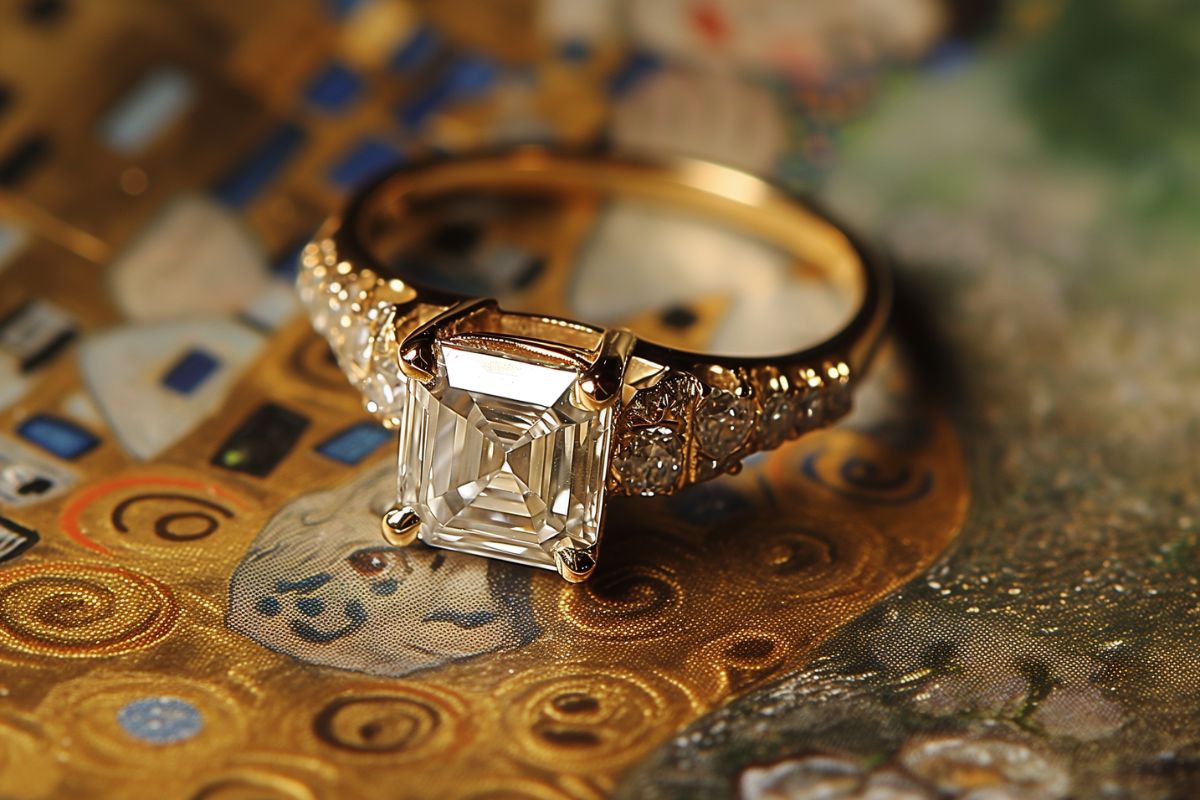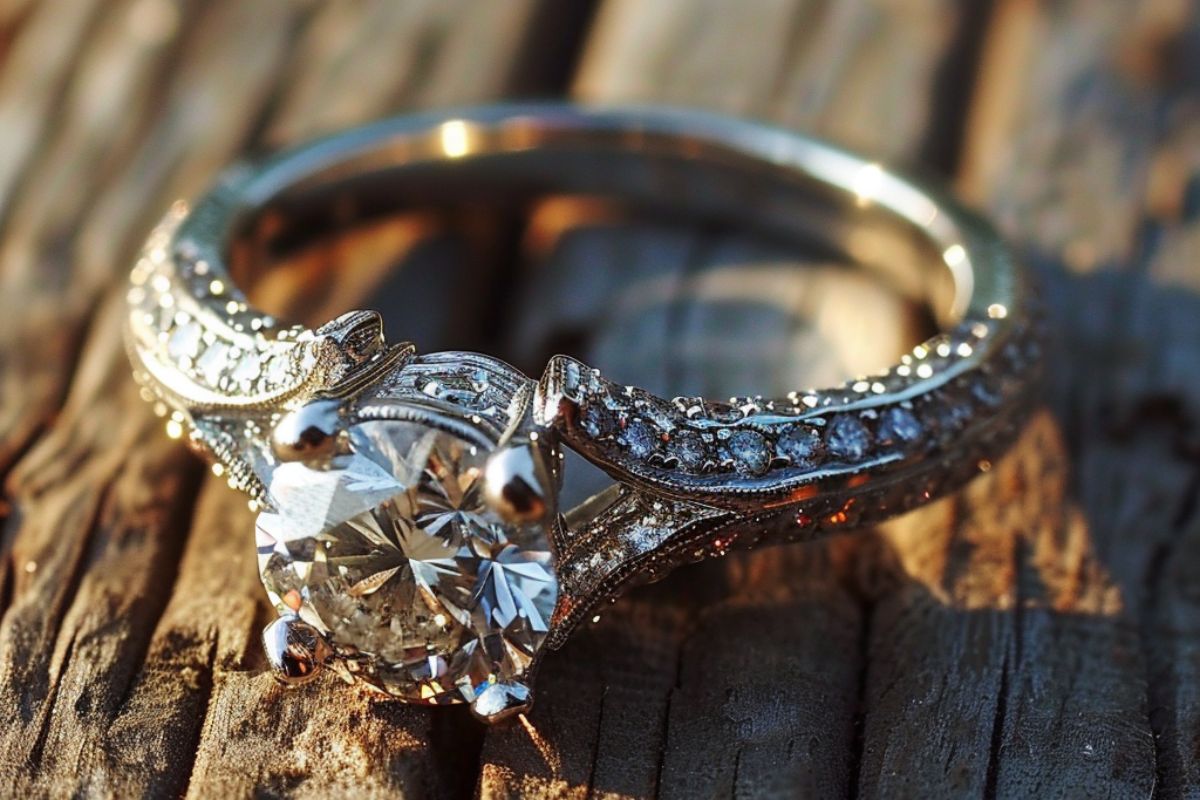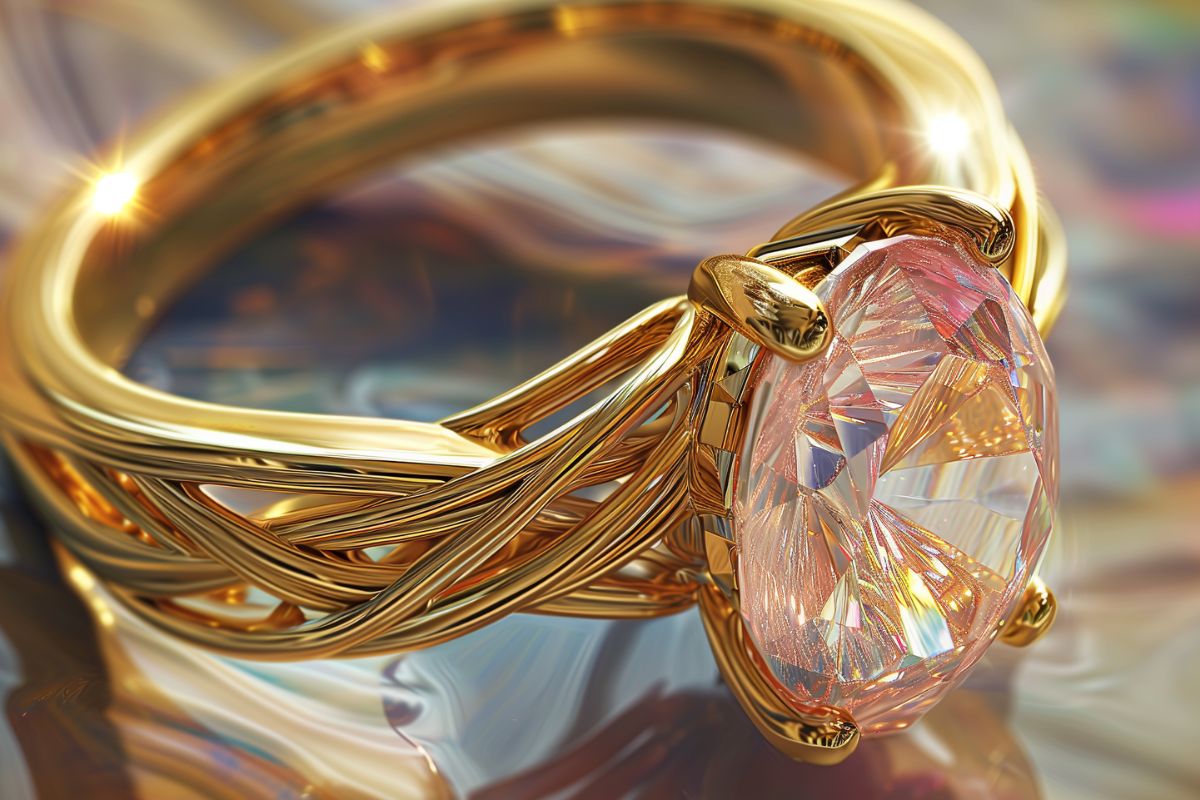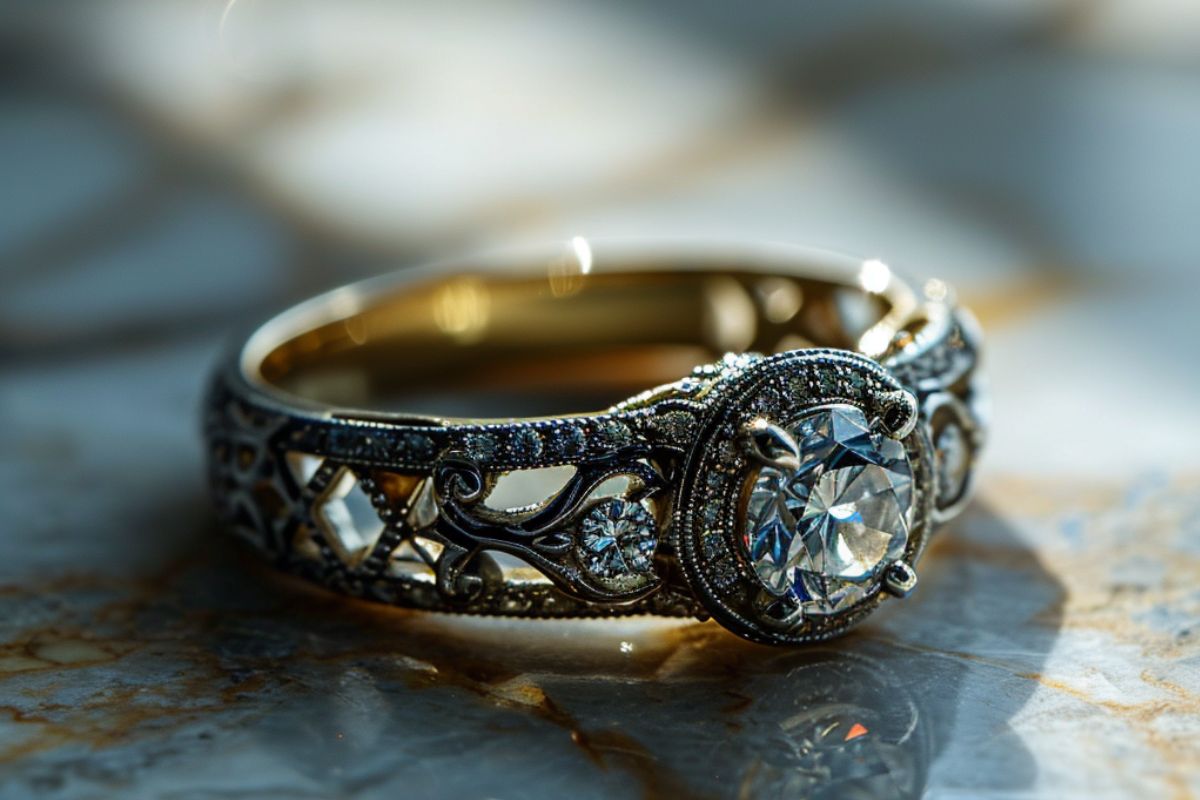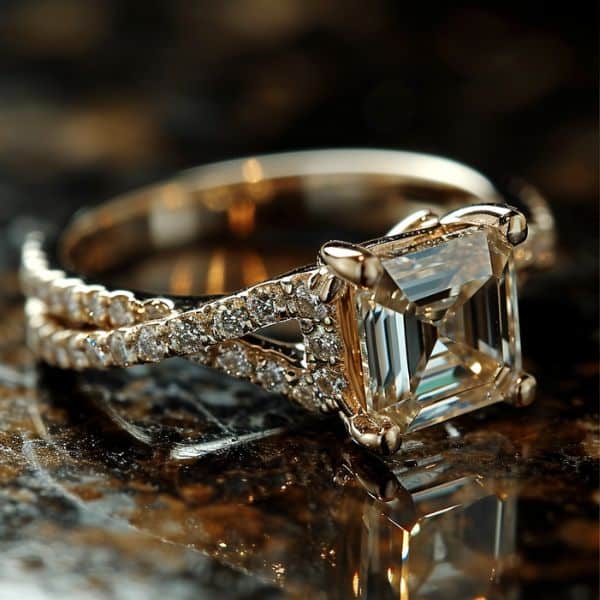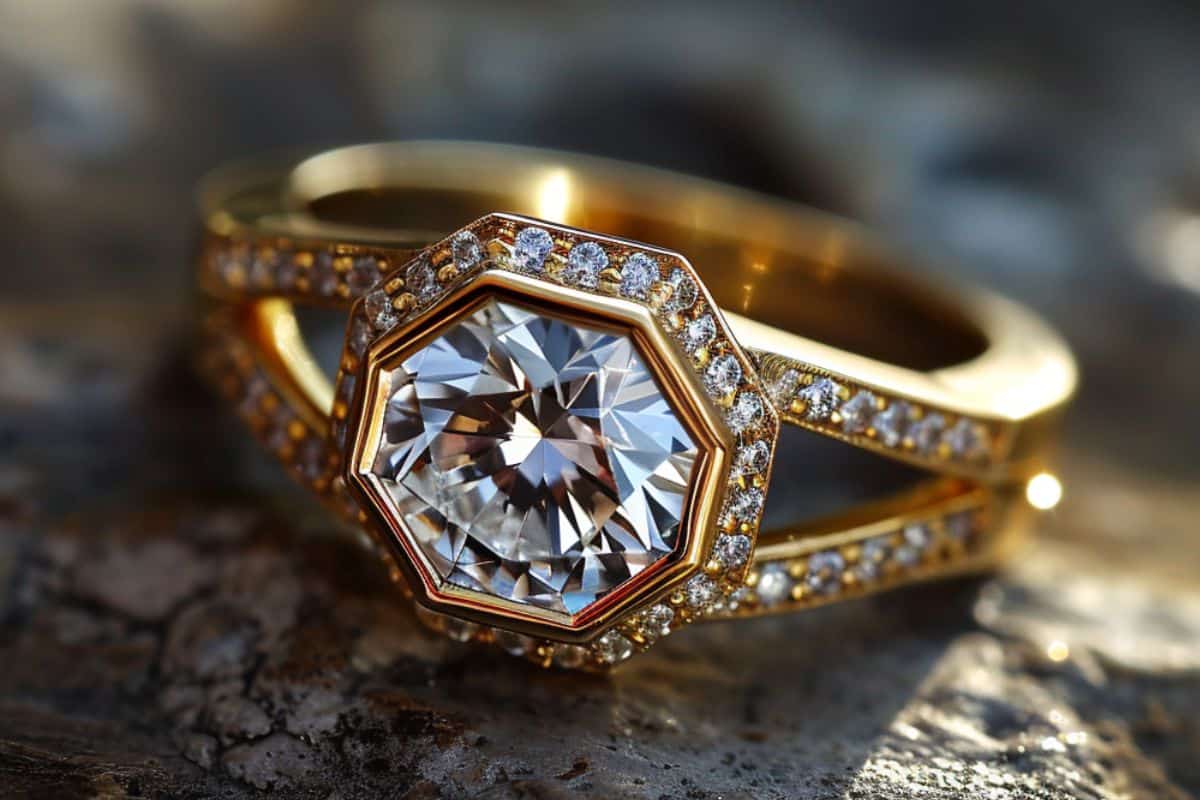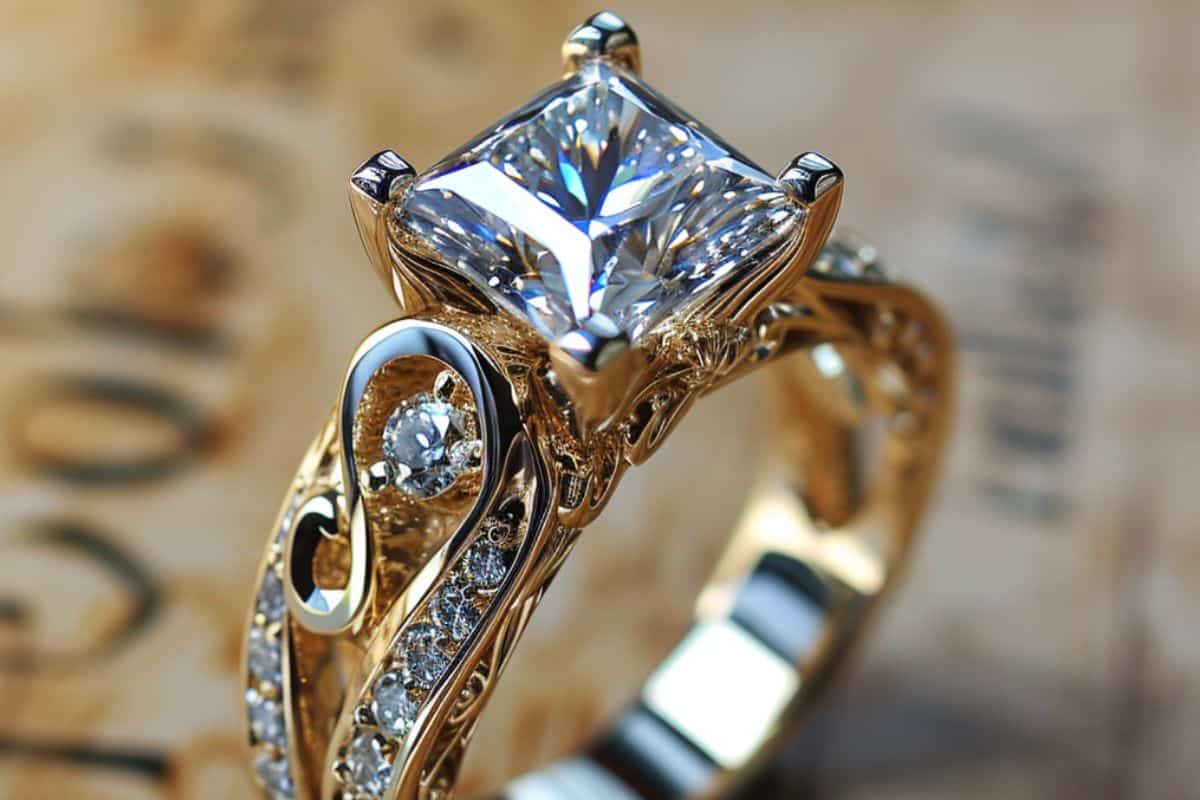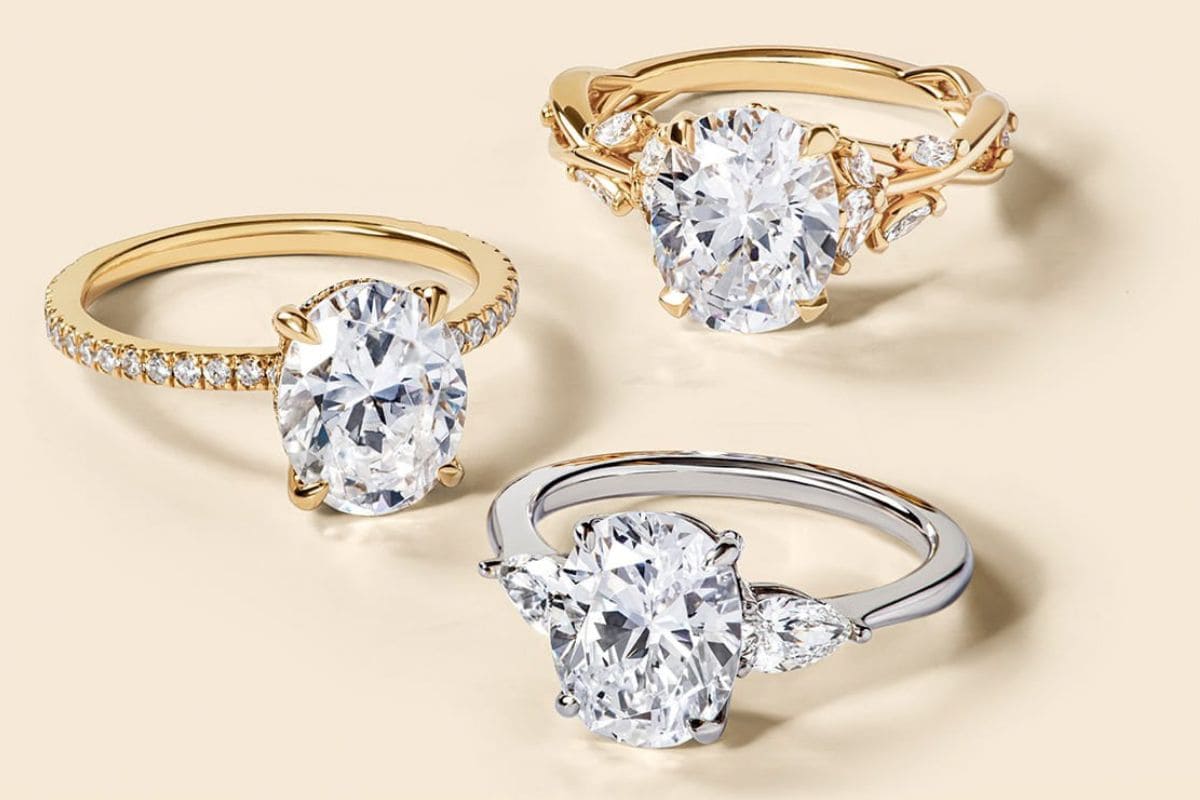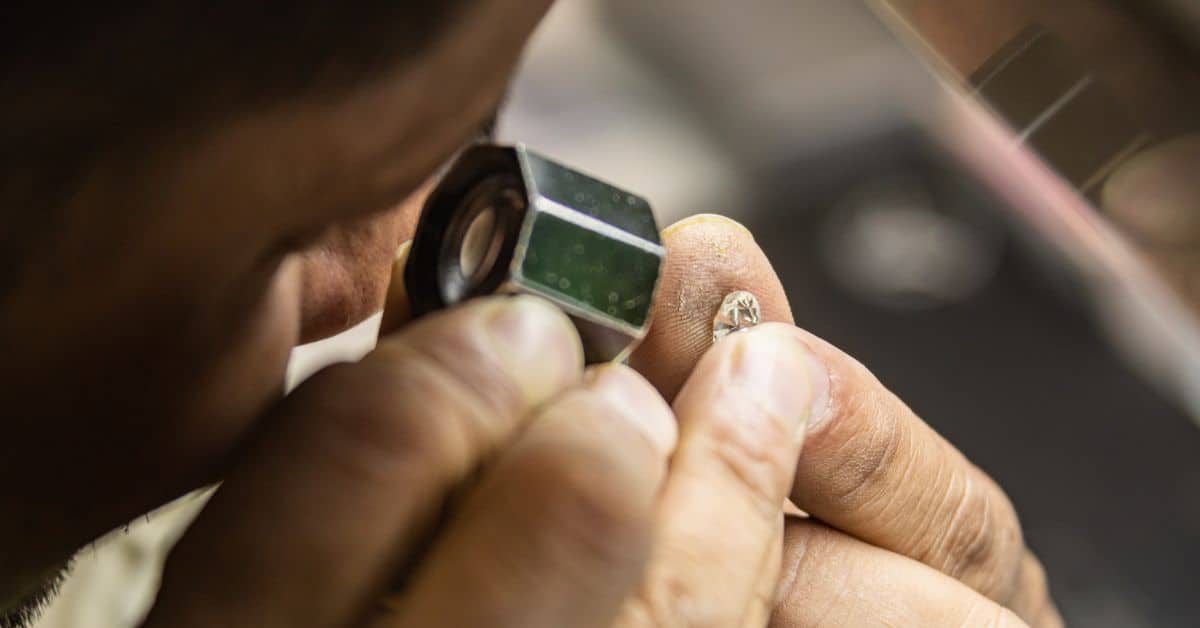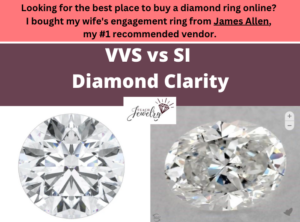
The clarity of a diamond refers to the presence and impact of inclusions located in its facets.
It’s graded on a scale from flawless (FL) to I (included), with several categories in between, such as VVS (very, very slightly included) and SI (slightly included).
The main difference between VVS and SI diamonds is VVS diamonds often have a fewer number of inclusions, and those blemishes are less impactful. This results in VVS diamonds appearing cleaner and selling for a higher price than ones graded SI.
Let’s compare VVS versus SI diamonds, including:
- An overview of each category
- The specific grades within those designations
- How they’re different
- How to decide which is right for you
What is VVS Diamond Clarity?
VVS diamonds are ones with clarity grades below internally flawless but above those deemed very slightly included (VS). It’s a scale used by the Gemological Institute of America (GIA) and many other organizations that assess the quality of diamonds.
This round-cut diamond is from the vendor where I bought my wife’s engagement ring, and it earned a VVS grade.
Check out the high-resolution image, and rotate it 360 degrees to learn how it appears at every angle.
Gemologists often have to scan the diamond multiple times before identifying small pinpoints, a transparent feather, or traces of a cloud.
Within the VVS designation, there are two levels: VVS1 and VVS2.
The difference is a subjective judgment by the gemologist that the VVS1 diamond’s inclusions are less impactful than ones in the VVS2 gem. This impact refers to how the imperfections affect its appearance, durability, and brilliance.
But the distinction is minor.
For example, check out this VVS1 diamond.
Compare it to this VVS2 diamond.
Even with quality images, they’re difficult to tell distinguish because the inclusions are so minimal.
In that case, balance its other qualities with its price to learn which is the right choice for your ring.
What is SI Diamond Clarity?
SI diamonds have inclusions that are easily visible with 10x magnification and often noticeable to the naked eye.
Check out the high resolution image below on the vendor’s site.
When you rotate it, many of the inclusions are obvious. But you still need to review the GIA grading report to learn specifics.
The SI clarity grade sits below VS and above I and features two subcategories: SI1 and SI2.
In the same way there’s a minimal difference between VVS1 and VVS2 diamonds, there’s also not a wide gap in clarity between SI1 and SI2.
To provide an illustration, the image of the SI2 diamond below appears cleaner than the one that earned an SI1 grade.
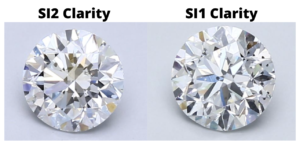
But the technical distinction is SI2 diamonds have more impactful inclusions, so it’s considered less valuable than one that earned a higher clarity grade.
What should matter most to you as the buyer is how they appear to the naked eye.
An SI grade doesn’t indicate the specific type of clarity characteristic found in the diamond, but examples include:
- Etch channels
- Needles
- Indented naturals
- Cavities
In most cases, you’ll find a combination in various sizes and degrees of impact. They’ll be found in almost every area of the diamond, such as its table, crown, and pavilion.
How are VVS and SI Diamonds Different?
1. Number of Inclusions
In almost every case, VVS diamonds have fewer inclusions than ones graded SI. This is a reference to both the number and size of blemishes, as well as how many different types are present.
Some VVS diamonds have only one type of inclusion.
For example, this one-carat round-cut earned a VVS1 grade from the GIA.
On the report, you can view the inclusion plot and see the grader noted only one type of inclusion: a feather.
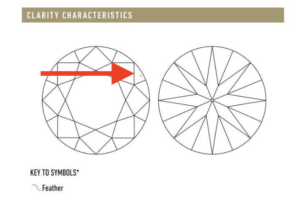
The feather is so small that it’s barely visible on the plot.
On the other hand, SI diamonds are often full of multiple kinds of inclusions. It’s rare to find one with a single flaw, unless it’s significant enough to warrant an SI grade by itself.
As an example, this one-carat diamond earned an SI2 clarity grade. Using the company’s high-resolution image technology, we can see crystals, needles, and feathers.
Some are dark, and others are white. But we’re confident all would be noticeable even without magnification.
The grading report for this diamond, pictured below, confirms their presence.
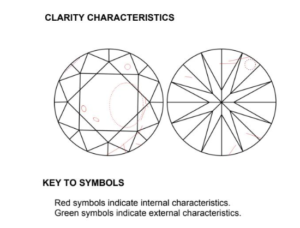
There’s a large cloud that spans the table and a few crystals beside it. The needles are primarily on the pavilion view.
The higher number of inclusions in SI diamonds also has the potential to affect its fire and brilliance.
A diamond’s cut quality is what most impacts light return, but light hitting an imperfection can distort the way it’s sent back to the viewer.
This means VVS diamonds are often more brilliant than ones graded SI when all other traits are equal.
2. Eye-Cleanliness
A diamond that looks flawless to the naked eye is called eye-clean. It’s one of the most effective ways to save money because ones with lower clarity grades sell for less.
SI diamonds aren’t always eye-clean, especially if it’s over one carat. As you move to a higher carat weight, those inclusions are more likely to show in its large facets compared to smaller ones.
SI1 diamonds are more likely to be eye-clean than ones graded SI2, but always view it in high-resolution or in-person before buying so you know what to expect.
For example, this lab-created diamond earned an SI2 clarity grade from the International Gemological Institute.
Its black spots are easily visible with magnification, so I expect them to appear to the naked eye as well.
But with an SI1 clarity grade, its inclusions aren’t as visible with magnification.
It often appears eye-clean.
VVS diamonds are almost always flawless to viewers. Unless it’s a dark inclusion on a massive diamond, it’s nearly impossible to see these blemishes.
3. Price
Buyers are willing to pay a higher price for diamonds with fewer inclusions, so VVS diamonds are more expensive than ones graded SI.
The best way to understand prices for VVS versus SI diamonds is to assess prices from a diamond retailer, where the diamonds have all the same qualities except for clarity.
And to further help the comparison, I’ll place VVS1 and SI1 diamonds next to each other, followed by VVS2 and SI2.
I examined VVS1, VVS2, SI1, and SI2 diamond prices from James Allen with the following traits:
- Carat weight: 0.90
- Cut: Very good
- Color: G
SI2 diamonds had an average price of $3,691, with a range of $2,780-$4,130.
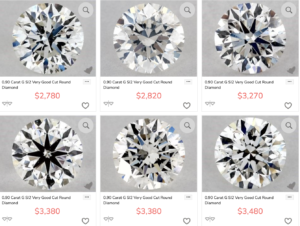
For VVS2 diamonds, the average price is $6,548, and the range is $5,440-$7,370.
That’s a 77 percent premium for a VVS2 diamond versus one graded SI2.
The average price of their SI1 diamonds with those qualities is $4,680, while their VVS1 diamonds sell for an average of $7,092.
That’s a 51 percent increase for the diamonds with fewer inclusions.
These examples demonstrate how you’ll pay far less for a diamond with more impactful flaws.
In general, you can expect the price to increase 10%-20% for every step up the GIA clarity scale.
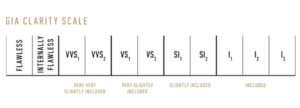
The jump is toward the higher end of that range when it’s between two categories, such as from I to SI or VS to VVS.
4. Durability
SI diamonds have a higher likelihood of chipping or fracturing because inclusions affect durability.
They represent weak points on a diamond where a hit, drop, or too much pressure from the setting has the potential to break it.
These chips are more likely to occur in places with large inclusions like feathers or cavities and when it’s located in a position that’s already susceptible, like an extremely thin girdle or the pointed corners of princess and baguette cuts.
For example, I’ve highlighted one of the the four sharp corners on the princess cut below.
These areas are less durable than the rounded edges found on round-cut diamonds.
The way to minimize the chance of durability issues in SI diamonds is to choose one where the inclusions are small and in locations where the diamond is structurally sound.
Flaws like twinning wisps, needles, and pinpoints don’t often cause these problems, so you could also opt toward gems that feature these inclusions as opposed to feathers.
Another tip is to protect included areas with a strong setting. Prongs are the traditional style and sufficient in almost every case, but bezel settings offer the most security.
If you’ve chosen a prong setting for your SI diamond, avoid a prong placing too much pressure directly on an inclusion. Although it will hide the flaw from view, that area may be too weak to withstand the additional weight.
There are rarely durability issues caused by imperfections in VVS diamonds. The inclusions are miniscule and have little impact on its structure.
What do They Have in Common?
The commonality between VVS and SI diamonds is they’re both used as the center diamond in engagement rings.
That’s because many buyers are less concerned with a specific clarity grade and more focused on its price and how it appears to the naked eye.
If you’re willing to filter through many diamonds, you can find tremendous value at SI1, especially for diamonds less than one carat.
Because they’re smaller in size, inclusions at that grade often aren’t as visible to the naked eye.
There are instances where you could place 0.75 carat VVS2 and SI1 diamonds next to each other, and they’d appear almost identical.
But you can save hundreds or thousands of dollars by choosing the latter for your engagement ring.
How to Decide Between VVS and SI Diamonds
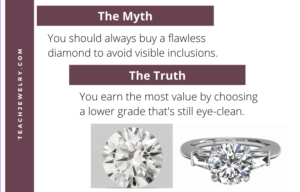
Comparing VVS versus SI diamonds involves understanding clarity grades and how inclusions affect a diamond’s overall performance.
Here are some guidelines to assist in your decision.
Opt for a VVS diamond if:
- You’re willing to pay a premium for a diamond where inclusions are barely noticeable with 10x magnification
- The diamond is large enough that even small inclusions could be visible
- You want to avoid any chance of durability issues caused by heavy inclusions in vulnerable positions
Consider an SI diamond if:
- You’ve viewed it in-person or through high-resolution images
- Three to five different types of flaws don’t concern you
- You plan to put the savings into other traits or an improved setting
Explore a variety diamonds at online and traditional retailers.
By pairing VVS and SI diamonds with multiple types of settings, you’ll create the perfect ring for you.

Jacob Clarke
Jacob Clarke is the founder of TeachJewelry.com.
He earned an Applied Jewelry Professional Diploma from the Gemological Institute of America (GIA) and now brings you essential information about diamonds, settings, and more.
Jacob has consulted with leading jewelry brands, and his work has been cited in Clean Origin, Diamond Nexus and industry publications.
He's also a member of the International Gem Society.
He enjoys discussing jewelry with readers, so contact him with any questions at jacob.clarke@teachjewelry.com.

